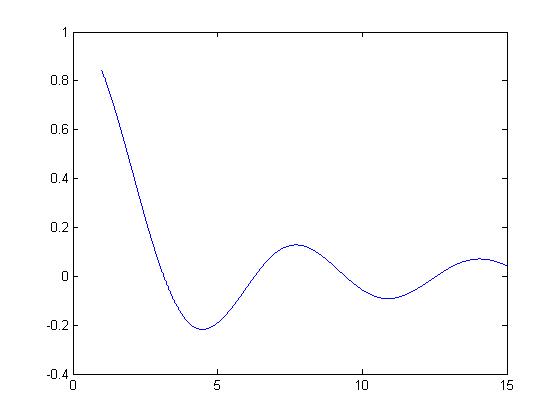Periodic versus non-periodic functions (hw1, ECE301)
Read the instructor's comments here.
Periodic Function
The definition of a periodic function is as follows: x[n] is periodic iff there exists an integer N such that x[n+N] = x[n]. The value of N is called the "Period."
An example of a periodic function is $ f(t) = e^{2\pi j} $. To prove this, we do the following:
$ x[n+N] = x[n] $
$ e^{2\pi j (n+N)} = e^{2\pi j n} $
$ {e^{2\pi j n} e^{2\pi j N}} = e^{2\pi j n} $
$ e^{2\pi j N} = 1 $
$ \cos(2\pi N) + j\sin(2\pi N) = 1 $
Which is true if
$ 2\pi N = 2\pi $
at some point.
Since N = 1 yields $ 2\pi = 2\pi $, we can conclude that in fact, $ f(t) = e^{2\pi j} $ is periodic.
Non-Periodic Function
The function shown is $ f(t) = {\sin(t)\over t} $.
Note that the function never repeats itself. It changes constantly over its entire expanse.


